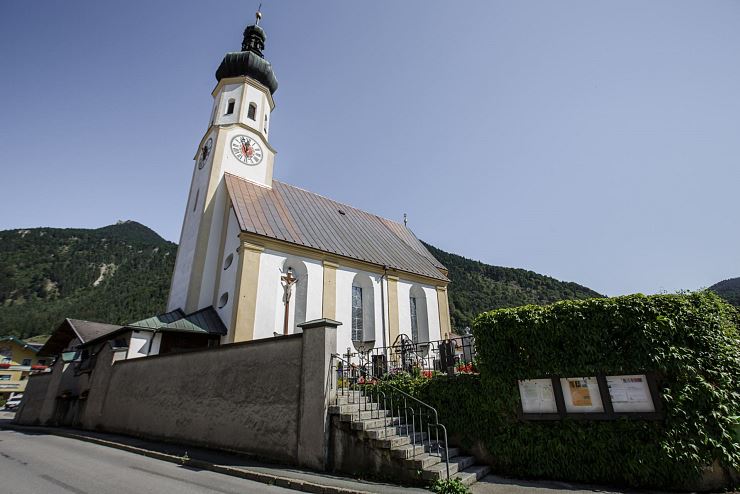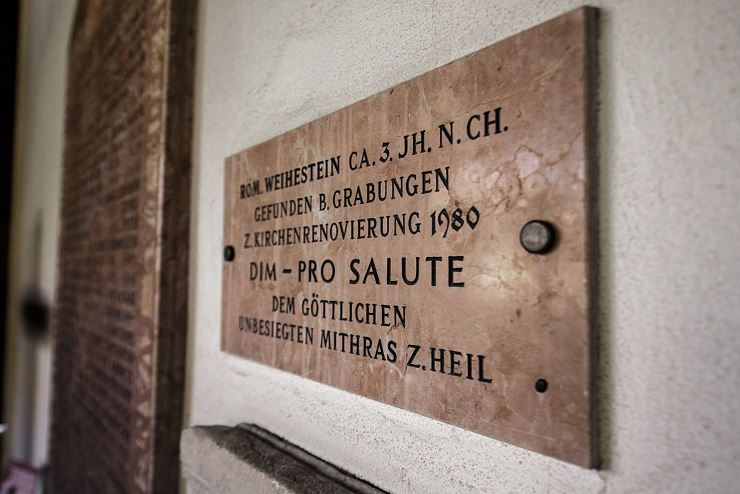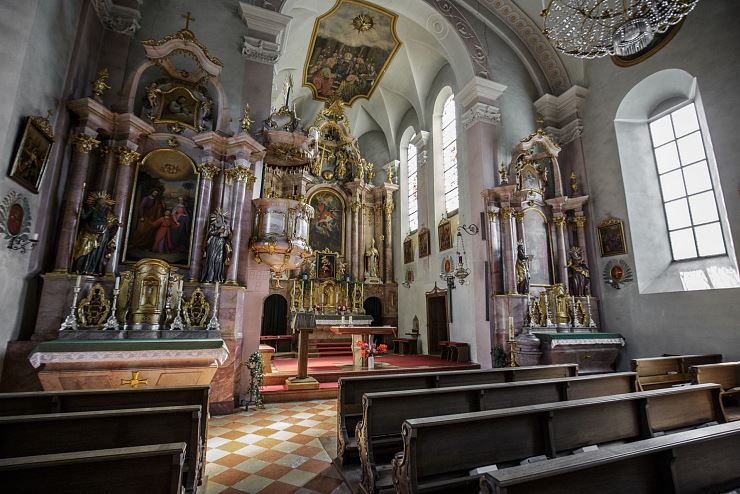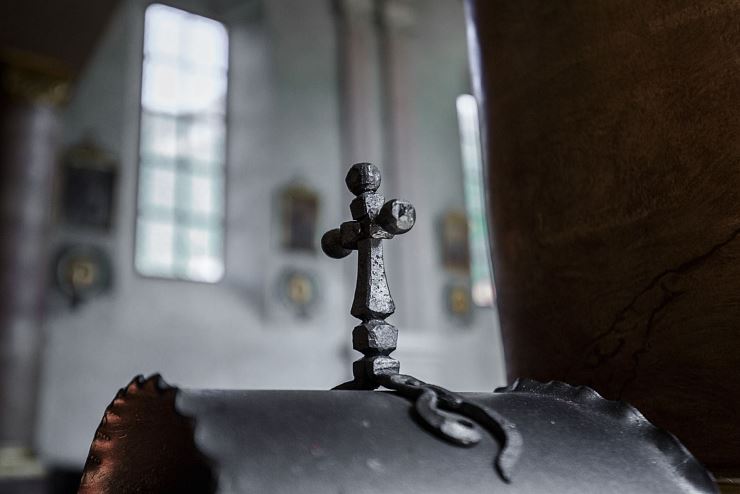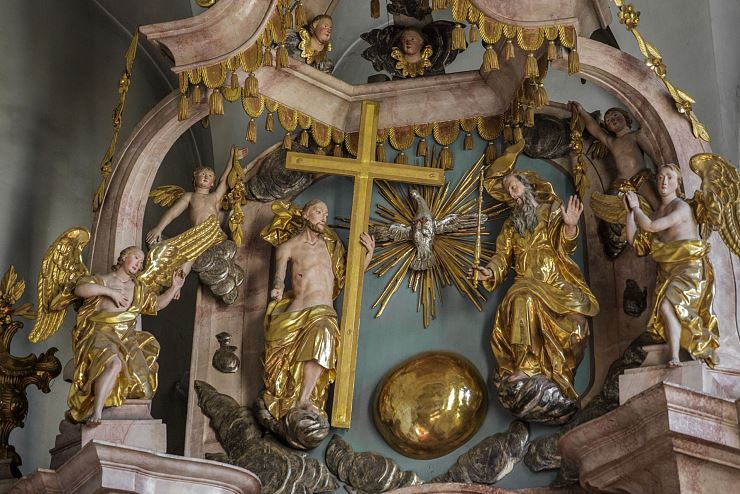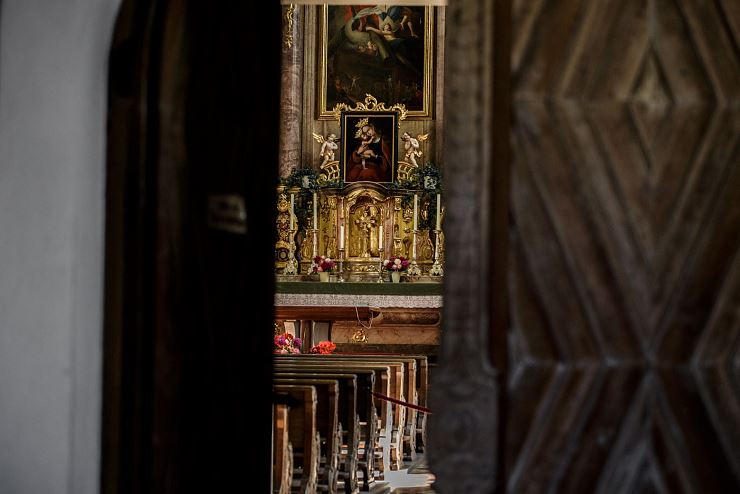Energy centre: Mithras stone at the church in Erl
A small stone with a big effect - An energy centre in the hands of God
It is an imposing structure at the heart of Kufsteinerland: the parish church in Erl. This beautiful building at the foot of the Zahmen Kaiser is eye-catching even from the outside. Once you enter the atrium, your eye is immediately directed towards a rare stone integrated in the church walls. A valuable relict which invites visitors to take a journey back through time. Maria Bachmann from Erl explains what you can experience here.
Energy centres can be found around the valleys, mountains and lakes of Kufsteinerland. How long has the parish church in Erl been here and what makes it so special? Every sacred place has its own charm. The parish church in Erl has a lengthy history. The first documented mention of the church was in the year 788. It often fell victim to war and was constantly being rebuilt. The church we see today is its seventh incarnation.
The sun drenches the church in light and the Zahme Kaiser in the background creates a unique backdrop. And once you know the history of this sacred place, you quickly see it through different eyes. What happened here? How much labour was invested to rebuild the church again after each war? The large atrium certainly causes visitors to become lost in thought and is home to the energy centre.
A stone with a story to tell
The eye is immediately drawn to the church walls. A stone bearing the letters ‘DIM’ decorates the church atrium. “This is an extremely rare stone from the Mithras cult which is said to have been brought to Erl by Roman soldiers and now decorates the atrium of the church. This precious relict from the 3rd century is proof that Erl was home to the Mithras cult, a mystery cult which was widespread across the Roman empire. DIM – Deo invicto mithrae prosalute – means ‘for the salvation of the God Mithras’, according to Maria Bachmann.
A display panel in-front of the stone provides visitors with insight into its background. But when was the stone discovered? “We were not aware of the relict until quite recently. The decision was taken in 1980 to investigate the stones of the church following years of research and to undertake renovation work. Archaeologists were certain that Roman remains were present beneath the church and in the walls. Following deep excavation work over a period of weeks, a few skulls were found but no proof that the Romans once lived here. There was great disappointment and on the day before the development of the church, a construction worker went around the site once more. When he looked from the galleries down to the ground, he noticed that one stone was inscribed. And this was exactly what they had been seeking for weeks: the Mithras stone.
The power of a stone
There is a wooden bench in-front of the historic stone where visitors can sit a while and reflect. And it is here that the energy centre is located: “The place radiates a lot of energy. If you think how much energy people have already invested here so that the church can serve as a refuge for people. Many things have happened here over the last few centuries. Battles, celebrations and in particular, lots of prayer. If only stones could talk…” says Maria, who makes the sign of the cross before leaving this unique spot.

